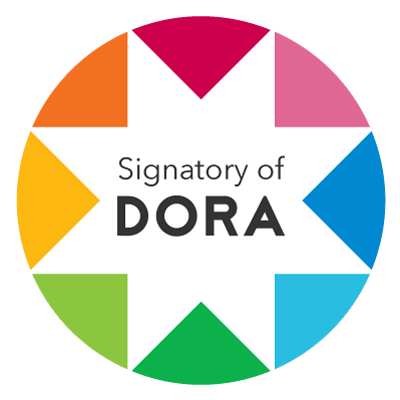Sharenting y su asociación con la impulsividad en adultos de la Argentina y otras naciones de la América Latina
DOI:
https://doi.org/10.15517/7g6h2b10Palabras clave:
redes sociales, menores, género, edad, impulsividadResumen
El sharenting o exposición a menores en redes sociales por parte de los adultos, es una problemática con implicancias sociales, psicológicas y legales debido al riesgo de que dichos contenidos sean usados por terceros con propósitos maliciosos. El presente estudio es de los pocos existentes en América Latina. El propósito de esta investigación era explorar los niveles de sharenting, determinar si el género, la edad y la nacionalidad introducían diferencias en los puntajes de esta conducta y si la impulsividad se asociaba con el sharenting. Para este fin, se constituyó una muestra intencional de 903 adultos de la América Latina. Contestaron la Escala de Evaluación del Sharenting de Romero-Rodriguez et al. 2022 y la Escala de Comportamiento Impulsivo (UPPS-P) de Lynam et al. 2006. Los resultados indicaron que las mujeres llevaban a cabo mayores niveles de sharenting y, a menor edad, mayor puntaje de esta conducta. Los adultos de la Argentina mostraban mayor nivel de esta conducta, en comparación con los de otras naciones de la región. A mayor impulsividad, mayores niveles de sharenting. Los resultados de este estudio indican que los factores demográficos, culturales y psicológicos deben ser tenidos en cuenta a la hora de prevenir esta problemática.
Descargas
Referencias
Adawiah, L. R., y Y. Rachmawati. 2021. "Parenting Program to Protect Children's Privacy: The Phenomenon of Sharenting Children on Social Media." Jurnal Pendidikan Usia Dini 15 (1): 162–180. http://dx.doi.org/10.21009/JPUD.151.09 DOI: https://doi.org/10.21009/JPUD.151.09
Akpinar, B. S., N. Paylan, Ş. Etlik, Büşra Erus, y H. Karakoç. 2020. "‘Sharenting’ Konusunda Ebeveynlerin Farkındalık Düzeyleri." Journal of General Health Sciences 2: 8–18. https://dergipark.org.tr/tr/pub/jgehes/issue/56493/685518
Balaban, H. Ö. 2022. "Demographic, Social Network Structure-and Instagram Use-Related Factors Predicting Parents’ Sharenting Behaviors."Psikiyatride Güncel Yaklaşımlar 14 (Suppl. 1): 28–36. DOI: https://doi.org/10.18863/pgy.1026147
Barkley, R. A. 1997. "Behavioral Inhibition, Sustained Attention, and Executive Functions: Constructing a Unifying Theory of ADHD."Psychological Bulletin 121 (1): 65–94. DOI: https://doi.org/10.1037//0033-2909.121.1.65
Bhroin, N., T. Dinh, K. Thiel, C. Lampert, E. Staksrud, y K. Ólafsson. 2022. "The Privacy Paradox by Proxy: Considering Predictors of Sharenting". Media and Communication 10 (1): 371–383. DOI: https://doi.org/10.17645/mac.v10i1.4858
Burgos Videla, C., y Castillo-Rojas, W. 2021. “Análisis de datos sobre el uso y consumo de servicios internet diferenciado por género en estudiantes universitarios”. Ingeniare. Revista chilena de ingeniería, 29 (3): 531-545. http://dx.doi.org/10.4067/S0718-33052021000300531 DOI: https://doi.org/10.4067/S0718-33052021000300531
Cándido, A., E. Orduña, J. Perales, A. Verdejo, y J. Billieux. 2012. "Validación Española de la Versión Corta de la Escala de Impulsividad UPPS-P" Trastornos Adictivos 14 (3): 73–78. https://doi.org/10.1016/S1575-0973(12)70048-X DOI: https://doi.org/10.1016/S1575-0973(12)70048-X
Casey, B. J., L. H. Somerville, I. H. Gotlib, O. Ayduk, N. T. Franklin, M. K. Askren, ... y Y. Shoda. 2011. "Behavioral and Neural Correlates of Delay of Gratification 40 Years Later". Proceedings of the National Academy of Sciences 108 (36): 14998–15003. https://doi.org/10.1073/pnas.1108561108 DOI: https://doi.org/10.1073/pnas.1108561108
Catena Peña, L. 2022. Sharenting: La Vida de los y las Menores al Descubierto. Una Revisión Sistemática del Fenómeno. Tesis de grado, Universidad de Jaén, España.
Çimke, S., D. Yildirim, y S. Polat. 2018. "Child Rights Neglect in Social Media: Sharenting." Güncel Pediatri 16 (2): 261–267. https://www.cabidigitallibrary.org/doi/full/10.5555/20193029133 DOI: https://doi.org/10.4274/jcp.2017.0038
Collins. 2016. Collins English Dictionary. Editorial Collins.
De Sola Gutiérrez, J., G. R. Valladolid, y F. R. de Fonseca. 2013. "La impulsividad." Health and Addictions: Salud y Drogas 13 (2): 145–155. DOI: https://doi.org/10.21134/haaj.v13i2.211
Duggan, M. 2015. Mobile Messaging and Social Media - 2015. Pew Research Center. http://www.pewinternet.org/2015/08/19/mobile-messaging-and-social-media-2015/
Facio, A., S. Resett, C. Mistrorigo, y F. Micocci. 2006. Adolescentes Argentinos. Cómo Piensan y Sienten (Argentinean Adolescents. How They Think and Feel). Lugar.
Facio, A., y S. Resett. 2006. "Argentina." En J. J. Arnett, ed., Routledge International Encyclopedia of Adolescence. Routledge.
Facio, A., y S. Resett. 2012. "Argentina." En J. J. Arnett, ed., Adolescent Psychology Around the World, 151–162. Psychology Press. https://doi.org/10.4324/9780203809129 DOI: https://doi.org/10.4324/9780203809129
Ferrara, P., I. Cammisa, G. Corsello, I. Giardino, M. Vural, T. L. Pop, C. Pettoello-Mantovani, F. Indrio, y M. Pettoello-Mantovani. 2023. "Online 'Sharenting': The Dangers of Posting Sensitive Information About Children on Social Media." The Journal of Pediatrics 257: 113–322. https://doi.org/10.1016/j.jpeds.2023.01.002 DOI: https://doi.org/10.1016/j.jpeds.2023.01.002
Fundación Telefónica. 2008. La Generación Interactiva en Iberoamérica (The Interactive Generation in Ibero-America). Ariel.
Hinojo-Lucena, F. J., I. Aznar-Díaz, M. P. Caceres-Reche, J. M. Trujillo-Torres, y J. M. Romero-Rodríguez. 2020. "Sharenting: Internet Addiction, Self-Control and Online Photos of Underage Children." Comunicar 28 (64): 97–108. https://doi.org/10.3916/C64-2020-09 DOI: https://doi.org/10.3916/C64-2020-09
Horvath, J., C. Mundinger, M. M. Schmitgen, N. D. Wolf, F. Sambataro, D. Hirjak, ... y R. C. Wolf. 2020. "Structural and Functional Correlates of Smartphone Addiction." Addictive Behaviors 105: 106334. DOI: https://doi.org/10.1016/j.addbeh.2020.106334
Hruska, J., y P. Maresova. 2020. "Use of Social Media Platforms Among Adults in the United States—Behavior on Social Media." Societies 10 (1): 27. https://doi.org/10.3390/soc10010027 DOI: https://doi.org/10.3390/soc10010027
INDEC (Instituto Nacional de Estadísticas y Censos). 2021. Acceso y Uso de Tecnologías de la Información y la Comunicación. EPH. Ciencia y Tecnología 6 (1): 1–15.
Infobae. 2017. "Argentina Tiene Más de un Celular por Habitante." https://www.infobae.com/2010/01/01/492846-argentina-tiene-mas-un-celular-habitante/
Infobae. 2022. "Por Qué los Celulares se Volvieron Imprescindibles en la Última Década." https://www.infobae.com/inhouse/2022/10/13/por-que-los-celulares-se-volvieron-imprescindibles-en-la-ultima-decada/
Kilic, B. O., E. G. Ates, S. Kilic, N. E. C. Ilarslan, D. Konuksever, y B. Ulukol. 2023. "Measuring Sharenting Behavior: Validity and Reliability of the Turkish Version of the Sharenting Evaluation Scale." Annals of Medical Research 30 (10): 1257–1263. https://annalsmedres.org/index.php/aomr/article/view/455 DOI: https://doi.org/10.5455/annalsmedres.2023.08.213
Kolk, S.M., y Rakic, P. 2022. “Development of prefrontal cortex”. Neuropsychopharmacol. 47: 41–57. https://doi.org/10.1038/s41386-021-01137-9. DOI: https://doi.org/10.1038/s41386-021-01137-9
Kopecký, K., y R. Szotkowski. 2018. Parents and Fatherhood in the Digital Age. Olomouc.
Kopecký, K. 2019. "Jste rodiče? A jste aktivní v prostředí internetu? Možná i vy provozujete sharenting." E-bezpeci.cz.
Kopecký, K., R. Szotkowski, I. Aznar-Díaz, y J. M. Romero-Rodríguez. 2020. "The Phenomenon of Sharenting and Its Risks in the Online Environment: Experiences from Czech Republic and Spain." Children and Youth Services Review 110: 104812. https://doi.org/10.1016/j.childyouth.2020.104812 DOI: https://doi.org/10.1016/j.childyouth.2020.104812
Lavorgna, A., M. Tartari, y P. Ugwudike. 2023. "Criminogenic and Harm-Enabling Features of Social Media Platforms: The Case of Sharenting Practices." European Journal of Criminology 20 (3): 1037–1060. https://doi.org/10.1177/14773708221131659 DOI: https://doi.org/10.1177/14773708221131659
Lazard, L., R. Capdevila, C. Dann, A. Locke, y S. Roper. 2019. "Sharenting: Pride, Affect and the Day‐to‐Day Politics of Digital Mothering." Social and Personality Psychology Compass 13 (4): e12443. https://doi.org/10.1111/spc3.12443 DOI: https://doi.org/10.1111/spc3.12443
Leckart, S. 2012. "The Stanford Education Experiment." Wired 20 (4): 68–77. DOI: https://doi.org/10.1016/j.jsurg.2010.05.024
Livingstone, S., A. Blum‐Ross, y C. Zhang. 2018. What Do Parents Think, and Do, About Their Children’s Online Privacy? Parenting for a Digital Future: Survey Report 3. School of Economics and Political Science.
Lynam, D. R., G. T. Smith, S. P. Whiteside, y M. A. Cyders. 2006. The UPPS-P: Assessing Five Personality Pathways to Impulsive Behavior. Purdue University.
Marasli, M., E. Suhendan, N. H. Yilmazturk, y F. Cok. 2016. "Parents’ Shares on Social Networking Sites About Their Children: Sharenting." The Anthropologist 24: 399–406. https://doi.org/10.1080/09720073.2016.11892031 DOI: https://doi.org/10.1080/09720073.2016.11892031
Miller, J., K. Flory, D. Lynam, y C. Leukefeld. 2003. "A Test of the Four-Factor Model of Impulsivity-Related Traits." Personality and Individual Differences 34 (8): 1403–1418. https://doi.org/10.1016/s0191-8869(02)00122-8 DOI: https://doi.org/10.1016/S0191-8869(02)00122-8
Nigg, J. T. 2017. "Annual Research Review: On the Relations Among Self‐Regulation, Self‐Control, Executive Functioning, Effortful Control, Cognitive Control, Impulsivity, Risk‐Taking, and Inhibition for Developmental Psychopathology." Journal of Child Psychology and Psychiatry 58 (4): 361–383. https://doi.org/10.1111/jcpp.12675 DOI: https://doi.org/10.1111/jcpp.12675
Ordóñez Pineda, L., y S. Calva Jiménez. 2020. "Amenazas a la privacidad de los menores de edad a partir del Sharenting." Revista Chilena de Derecho y Tecnología 9 (2): 105–130. DOI: https://doi.org/10.5354/0719-2584.2020.55333
Otero, P. 2017. "Sharenting… Should Children’s Lives Be Disclosed on Social Media?" Archivos Argentinos de Pediatría 115 (5): 412–414. https://doi.org/10.5546/aap.2017.eng.412 DOI: https://doi.org/10.5546/aap.2017.eng.412
Peimanpak, F., A. Abdollahi, K. A. Allen, F. A. Rakhmatova, A. Aladini, S. H. Alshahrani, y J. Brewer. 2023. "Validation of the Online Version of the Sharenting Evaluation Scale (SES) in Iranian Parents: Psychometric Properties and Concurrent Validity." Brain and Behavior 13 (12): e3300. https://doi.org/10.1002/brb3.3300 DOI: https://doi.org/10.1002/brb3.3300
Pinter, K., P. C. González Caino, y S. Resett. 2022. "Propiedades psicométricas de la Escala de Impulsividad (UPPS-P) en una muestra de adultos argentinos." Interdisciplinaria 39 (1): 91–112. https://doi.org/10.16888/interd.2022.39.1 DOI: https://doi.org/10.16888/interd.2022.39.1.6
Porfírio, F., y A. Jorge. 2022. "Sharenting of Portuguese Male and Female Celebrities on Instagram." Journalism and Media 3 (3): 521–537. DOI: https://doi.org/10.3390/journalmedia3030036
Ponnusamy, S., M. Iranmanesh, B. Foroughi, y S. S. Hyun. 2020. "Drivers and Outcomes of Instagram Addiction: Psychological Well-Being as Moderator." Computers in Human Behavior 107: 106294. https://doi.org/10.1016/j.chb.2020.106294 DOI: https://doi.org/10.1016/j.chb.2020.106294
Resett, S. 2018. "Análisis psicométrico del Cuestionario de Agresores/Víctimas de Olweus en español." Revista de Psicología de la PUCP 36 (2): 576–602. http://dx.doi.org/10.18800/psico.201802.007 DOI: https://doi.org/10.18800/psico.201802.007
Resett, S., y P. C. González-Caino. 2019. "Propiedades psicométricas de un Cuestionario de Trolling en una muestra argentina." Revista Argentina de Ciencias del Comportamiento 11 (1): 48–57. https://doi.org/10.32348/1852.4206.v11.n1.20870 DOI: https://doi.org/10.32348/1852.4206.v11.n1.20870
Resett, S., y P. C. González Caino. 2025. "Propiedades psicométricas de una escala de sharenting en adultos argentinos." Interdisciplinaria.
Richardson, H. A., M. J. Simmering, y M. C. Sturman. 2009. "A Tale of Three Perspectives: Examining Post Hoc Statistical Techniques for Detection and Correction of Common Method Variance." Organizational Research Methods 12 (4): 762–800. https://doi.org/10.1177/1094428109332834 DOI: https://doi.org/10.1177/1094428109332834
Rodríguez, J. M., K. Kopecký, A. García-González, y G. Gómez-García. 2022. "Sharing Images or Videos of Minors Online: Validation of the Sharenting Evaluation Scale (SES)." Children and Youth Services Review 136. https://doi.org/10.1016/j.childyouth.2022.106396 DOI: https://doi.org/10.1016/j.childyouth.2022.106396
Rueda, F. J., L. P. Pinto, y A. C. Ávila-Batista. 2016. "Impulsividad y facetas de la personalidad: relación entre instrumentos de medida." Ciencias Psicológicas 10 (1): 7–16. http://www.scielo.edu.uy/scielo.php?script=sci_arttextypid=S1688-42212016000100002ylng=esytlng=es DOI: https://doi.org/10.22235/cp.v10i2.1149
Sanchez-Sarmiento, P., J. J. Giraldo-Huertas, y M. F. Quiroz-Padilla. 2013. "Impulsivity: A View from the Behavioral Neuroscience and Developmental Psychology." Avances en Psicología Latinoamericana 31 (1): 241–252.
Sarkadi, A., A. Dahlberg, K. Fängström, y G. Warner. 2020. "Children Want Parents to Ask for Permission Before 'Sharenting'." Journal of Paediatrics and Child Health 56 (6): 981–983. https://doi.org/10.1111/jpc.14945 DOI: https://doi.org/10.1111/jpc.14945
Steinberg, S. 2016. "Sharenting: Children’s Privacy in the Age of Social Media." University of Florida Levin College of Law Research Paper 16 (04): 1–47. https://scholarlycommons.law.emory.edu/elj/vol66/iss4/2/
Tosuntaş, Ş. B., y M. D. Griffiths. 2024. "Sharenting: A Systematic Review of the Empirical Literature." Journal of Family Theory & Review 16 (3): 525–562. DOI: https://doi.org/10.1111/jftr.12566
Tristán, L. A. C., I. G. Roa, y E. S. Blas. 2018. "Adicción a redes sociales e impulsividad en universitarios de Cusco." Revista de Psicología 8 (1): 13–37.
Verswijvel, K., M. Walrave, K. Hardies, y W. Heirman. 2019. "Sharenting, Is It a Good or a Bad Thing? Understanding How Adolescents Think and Feel About Sharenting on Social Network Sites." Children and Youth Services Review 104: 104401. https://doi.org/10.1016/j.childyouth.2019.104401 DOI: https://doi.org/10.1016/j.childyouth.2019.104401
Whiteside, S. P., y D. R. Lynam. 2001. "The Five Factor Model and Impulsivity: Using a Structural Model of Personality to Understand Impulsivity." Personality and Individual Differences 30 (4): 669–689. https://doi.org/10.1016/S0191-8869(00)00064-7 DOI: https://doi.org/10.1016/S0191-8869(00)00064-7
Wolf, R. D. 2020. "Contextualizing How Teens Manage Personal and Interpersonal Privacy on Social Media." New Media & Society 22 (6): 1058–1075. https://doi.org/10.1177/1461444819876570 DOI: https://doi.org/10.1177/1461444819876570
Descargas
Publicado
Número
Sección
Licencia
Derechos de autor 2025 Santiago Resett, Pablo González Caino (Autor/a)

Esta obra está bajo una licencia internacional Creative Commons Atribución-NoComercial-CompartirIgual 4.0.
Los autores/as que publiquen en esta revista aceptan las siguientes condiciones:
Los autores/as conservan los derechos de autor y autorizan a la revista el derecho de publicación de sus trabajos inéditos y originales, así como su presentación en distintos formatos (pdf, xml, html, epub, entre otros). Todos los artículos publicados cuentan con una licencia de atribución de Creative Commons, CC BY NC SA.
Los autores/as pueden realizar otros acuerdos contractuales independientes y adicionales para la distribución de la versión del artículo publicado en esta revista (p. ej., incluirlo en un repositorio institucional o sitio web personal).
Se recomienda a los autores/as publicar su trabajo en Internet (por ejemplo en repositorios institucionales o personales) tanto en preprint como una vez que el artículo haya sido publicado en esta revista, ya que puede conducir a intercambios productivos y a una mayor y más rápida difusión de sus artículos (vea The Effect of Open Access). Se recomienda señalar la versión del artículo que se publique (preprint o postprint).




